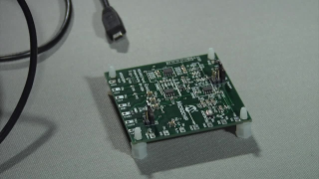Electronica Azi & Microchip SAM D21 Curiosity Nano Evaluation Kit
Win a Microchip SAM D21 Curiosity Nano Evaluation Kit (DM320119) from Electronica Azi and if you don’t win, receive a 20% off voucher, plus free shipping for one of these kits.
The SAM D21 Curiosity Nano Evaluation Kit is a hardware platform to evaluate the SAMD21G17D microcontroller. This low-power, high-performance ARM® Cortex®-M0+ based flash microcontroller is ideal for a wide range of home automation, consumer, metering, and industrial applications. It features an ARM Cortex-M0+ CPU running at up to 48MHz, 128KB in-system self-programmable Flash, 16KB SRAM memory and six Serial Communication interfaces (SERCOM), each configurable to operate as either: 12-bit, 350ksps ADC with up to 14 channels or 256-channel capacitive touch and proximity sensing.
The SAM D21 Curiosity Nano Evaluation is supported by the MPLAB® X Integrated Development Environment (IDE) and MPLAB Harmony v3 software development framework. The evaluation kit provides easy access to the features of the SAM D21 MCU to integrate the device into a custom design. The evaluation kit is compatible with the Curiosity Nano Base board (Part Number - AC164162) which allows you to quickly scale and prototype your next innovative design using the SAMD21G17D MCU.











